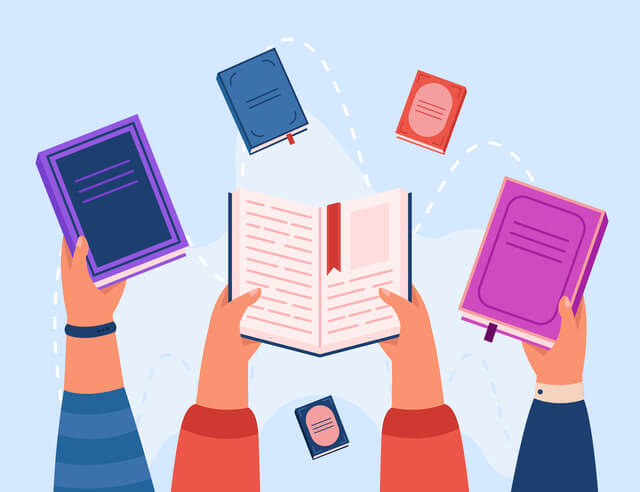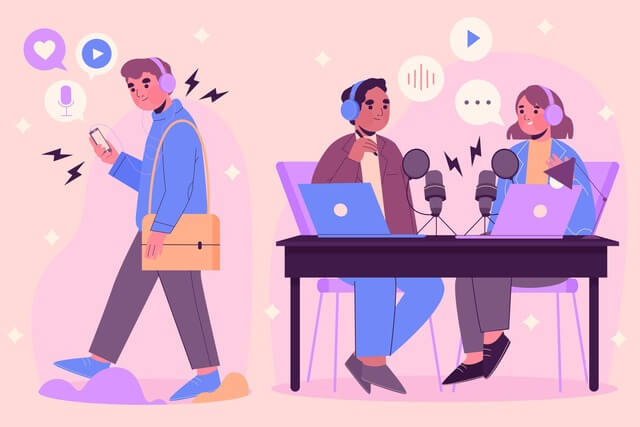Collocations are a great source of errors when you are learning English since these words go together or form fixed relationships.
Collocations create problems because sometimes these words don’t have an exact equivalent in our native language on which we can base the translation on.
As learners, we deal with collocations problems in a very passive way as we come across them when we read written material or listen to spoken passages.
Most of us rely on our critical thinking skills to recognize these patterns or combinations of words over time.
Table of Contents
- English Collocations in Use
- What are Collocations?
- Types of Collocations
- How should we approach collocations in classes?
- How should students Learn collocations?
- Activities to Teach Collocations in Classes
- Collocation Activity #1
- Collocation Activity #2
- Collocation Activity #3
- Collocation Activity #4
- Collocation Activity #5
- Collocation Activity #6
- Collocation Activity #7
- Conclusion
English Collocations in Use
I can’t recall classes and lessons devoted to the subject, my first interaction with the subject was while I was looking for books that could help me with my teaching, as I downloaded hundreds of books to learn and teach English, I found a book called English collocations in Use by Michael McCarth and Felicity O’Dell, a book meant for intermediate-level students and not for beginners.
I enjoyed reading the book and exploring the collocations about each different topic but it didn’t have a huge impact since I got used to learning new vocabulary in context.
Now as a full-time teacher I don’t spend entire lessons dealing with collocations however questions arise from time to time about different collocations in certain topics.
Sometimes I can recognize them beforehand, I know they could create problems so I take a step forward and let learners know about the differences before they start making those mistakes.
Not all the collocations are a source of problems since some of them have an exact equivalent in Spanish so an exact translation is easy to deal with. The main objective of this research is identifying some of the collocations that can become a stumbling block for English language learners and some tasks which can help us teach them creatively.
What are Collocations?
Collocations are words which always go together in English. This combination of words usually are natural to English native speakers however they present a lot of complications to English language learners because they are difficult to guess by simply translating the Spanish version of them.
Collocations tend to be the reason why students make errors when learning a language, these errors can’t go unnoticed and uncorrected since those phrases used incorrectly simply sound wrong to native speakers.
- Do the laundry
- Do the dishes
- Make decisions
- Earn Money
- Do the Homework
- Have a coffee
- Make a Mistake
Types of Collocations
There are different types of collocations and these are made up of different parts of the speech.
These are the types with examples
| Types | Example #1 | Example #2 |
| Adjective + noun | Brief chat | Major problem |
| Nouns + Verb | The company launched | The company grew |
| Noun + Noun | Sense of Pride | Sense of Anger |
| Verbs + Adverbs | Whisper Softly | Smile Proudly |
| Adverbs + Adjectives | Happily Married | Fully Aware |
As you can see there are many parts of the speech combination which can create thousands and thousands of collocations. We don’t necessarily study them all and some of them are more useful than others.
How should we approach collocations in classes?
I have been teaching for almost 9 years and collocation has never been a subject of study in any other language program that I have used over the years.
The best way to approach collocations lessons is by keeping this topic in mind and making decisions about which collocations can be linked to a particular topic.
For example, when I am teaching a lesson about daily routine I can’t avoid telling that the expressions I wash the dishes and I wash the clothing don’t sound natural to native speakers since the most common expressions to convey that meaning is doing the laundry and doing the dishes.
When I make those examples clear, I take the time to tell the students that learning a language implies making an effort to learn the standard version of it.
How should students Learn collocations?
There are different approaches to learning collocations in English, you might consider that going through a list of them could be a good way to deal with them, a similar approach that some people follow with idioms and slang words.
The problem with such an approach is that you are not necessarily learning these word combinations in context and that can make using them even more difficult.
The other approach is learning these in context since that maximizes the opportunity to use them in a future.
The problem with this approach is that the learner has to invest a lot of time reading and listening so he or she can cross them on a regular basis. It is a long process that requires that the learner thinks critically about the language.
A third approach to learning collocations is by using a list of the most common collocations ranked by order of frequency, these can be studied with a degree of certainty that you will come across them.
Activities to Teach Collocations in Classes
Regardless of the approach that you follow or that you can teach students to follow, as a teacher you can raise awareness about the use of collocations in the classroom by using some of the following recommended activities.
Collocation Activity #1
| Topic #1 | Collocations with have and get |
| Level | B1 |
| Goal | Help students recognize the differences between get and have |
| Technique | Board Races |
| Stage of the Class | Schema Activation |
| Time | 15 Minutes |
Instructions
- Teacher divides the whiteboard in two, one side has the word get and the other side has the word have on it
- Teacher gives a list of 20 words in a white paper such as married, lunch, drunk, breakfast.
- Both students are given two markers and they have to go to the whiteboard and under a minute, one of them write as many words as he/ she can using the collocation get and the other one as many as he /she can with the collocation have
- Learner will write sentences such as get married, have lunch, get drunk, and have breakfast
Considerations
This practice is helpful to raise awareness about the fact that some verbs in English require the combination of a verb and a noun to express the same idea in Spanish
Collocation Activity #2
| Topic #2 | Collocations with make and do |
| Level | B1 |
| Goal | Help students recognize the differences between make and do |
| Technique | Choose your Side |
| Stage of the Class | Schema Activation |
| Time | 15 Minutes |
Instructions
- Teacher divides the classroom by taping a line on the floor, one side belongs to the go category and the other one to the make category.
- Students stand on the line as they wait for instructions
- Teacher says a word such as the dishes
- Student move to the right spot, either make or go
- The same dynamic is repeated with words such homework, exercises and other
Considerations
The verbs make and do generate a lot of confusion among language learners who have issues dealing with the fact that there are two verbs in English to say the same thing in Spanish.
Collocation Activity #3
| Topic #3 | Problematic Collocations |
| Level | B1 |
| Goal | Help students recognize the use of with problematic collocations |
| Technique | Collocation Mingle |
| Stage of the Class | Schema Activation |
| Time | 15 Minutes |
Instructions
- Teacher prepares a set of confusing collocations such as fast car, fast train, quick recipe, quick decision, pay a visit and pay a compliment.
- You will give part of the collocation to one student, for example, a student will be given the word fast, while another one is given the word train.
- Students have to stand up and approach others by asking what they have and make a connection if possible.
- Once everyone has a pair, students in pairs talk and make sentences with it.
Considerations
The collocations selected by the teacher have to be problematic ones, in the case above, quick and fast represent a problem for Spanish speakers since you need only one in Spanish to convey the same meaning.
Collocation Activity #4
| Topic #4 | Collocations: Win, Earn, Gain and Win |
| Level | B2 |
| Goal | Help students recognize the differences between win, earn, gain and win. |
| Technique | Fake Whatsapp Conversations |
| Stage of the Class | Controlled Practice |
| Time | 15 Minutes |
Instructions
- Teacher introduces the topic by providing examples of collocation with win, beat, gain, and earn
- Teacher tells students to install a fake chat conversation application.
- Teachers asked them to make fake chat conversations using some of the collocations already introduced in step #1
- Learners can share the conversation with the rest of the classmates so they can have practical examples of the use of these collocations in context.
Considerations
These collocations are problematic because students have issues recognizing when to use one or the other. They might not even know that there are other ways to say ganar besides the one that they know.
Fake Whatsapp Conversations
These are some examples of some conversations that you can do with fake chat conversation apps. This one is about using the verb earn in combination with the word money
Telling students to create these as assignments can generate a good collection of examples for the rest of the classroom to see.
Collocation Activity #5
| Topic #4 | Collocations: Do, Play and Go |
| Level | A2 |
| Goal | Help students recognize the use of the verbs do, play and do in physical activities |
| Technique | Bingo |
| Stage of the Class | Schema Activation |
| Time | 15 Minutes |
Instructions
- Teacher introduces the topic by providing examples of collocation with win, beat, gain, and earn
- Teacher creates a bingo online using my free bingo cards website.
- Teachers send the link with the bingo cards to students
- Teacher mentions the name of the different collocations with go, do and play.
- The student who has a full card wins.
Considerations
The aim of this activity is to promote the successful repetition of key collocations with go, do and play.
My Free Bingo Cards
My Free Bingo Cards is one of the websites that I go to at least once every quarter since the site makes creating a bingo easier. You have the choice to print the cards or play online. I choose to play online with my students in the university since this is an environmentally friendly action.
I like the bingo activity so students can have a little bit of fun, plus the reinforcement of pronunciation and spelling that can be done with as they have to be looking at the cards repeatedly.
Collocation Activity #6
| Topic #4 | Collocations with make |
| Level | A2 |
| Goal | Help students recognize collocations with make |
| Technique | Mentimeter Polls |
| Stage of the Class | Schema Activation |
| Time | 15 Minutes |
Instructions
- Teacher introduces the topic by using a Mentimeter Poll.
- Teacher tells the students to go to Menti.com and insert the code provided by him or her.
- Students answer the poll which are simple statements using the simple past.
- Students answer the poll and provide insights about their answers.
Considerations
The aim of this activity is to promote the successful repetition of key collocations with the verb make.
As you can see, collocations with a verb can easily fit in other topics such as the tenses in English
MentiMeter in Action
Mentimeter can be used to maximize the exposure of students to certain collocations.
Students are given choices, they can choose one that they strongly feel about since the options are very open to interpretation.
Once students have answered you can ask them why they chose what they chose. In that they would be checking the combinations and using them.
Collocation Activity #7
| Topic #4 | Collocations with have |
| Level | A2 |
| Goal | Help students recognize collocations with have |
| Technique | Collage of Collocations |
| Stage of the Class | Controlled Practice |
| Time | 15 Minutes |
Instructions
- Teacher introduces the some common collocation with have
- Teacher show students some pictures and tells them to mention a collocation with have that comes to their minds
- Students make a sentence using the collocation that came to their mind.
Considerations
The aim of this activity is to promote the successful repetition of key collocations with the verb have.
As you can see, collocations with a verb can easily fit in other topics such as the tenses in English
Teaching with Images
The teacher can show the picture or show a collage with all the pictures.
Answer might vary but these are the ones I have in mind:
- Have a look, Have an accident
- Have a dream, have fun
- Have a break, have a problem
Sentences can be made with every tense you happen to be teaching that day
Conclusion
The conclusion that I reach is that we can teach collocations in several ways, these can be part of games and other activities that can be implemented outside the classroom.
We can use the most traditional methods to assess students and their knowledge of them with multiple choice questions, fill in the blanks, and matchings, however, we can also teach these through games and technological tools, especially in this day and age in which we are making a transition to online learning.
Any task that we have ever used in the language classroom to teach vocabulary can be used to teach collocations.
The major problem that I expect teachers to find is including collocations as part of the lesson. There are some topics that can be used to teach collocations like sports and collocations with go, play, and do but other topics don’t have an abundance of collocations that can be used in a single lesson without leaving the topic behind.
I think that we shouldn’t focus so much on the translation of the problematic collocations unless we think that a translation is necessary, collocations are combinations of words that happen to go together often so there is no major explanation that we could attempt to provide, and if there is an explanation, that tends to be more complicated than the question in the first place.


